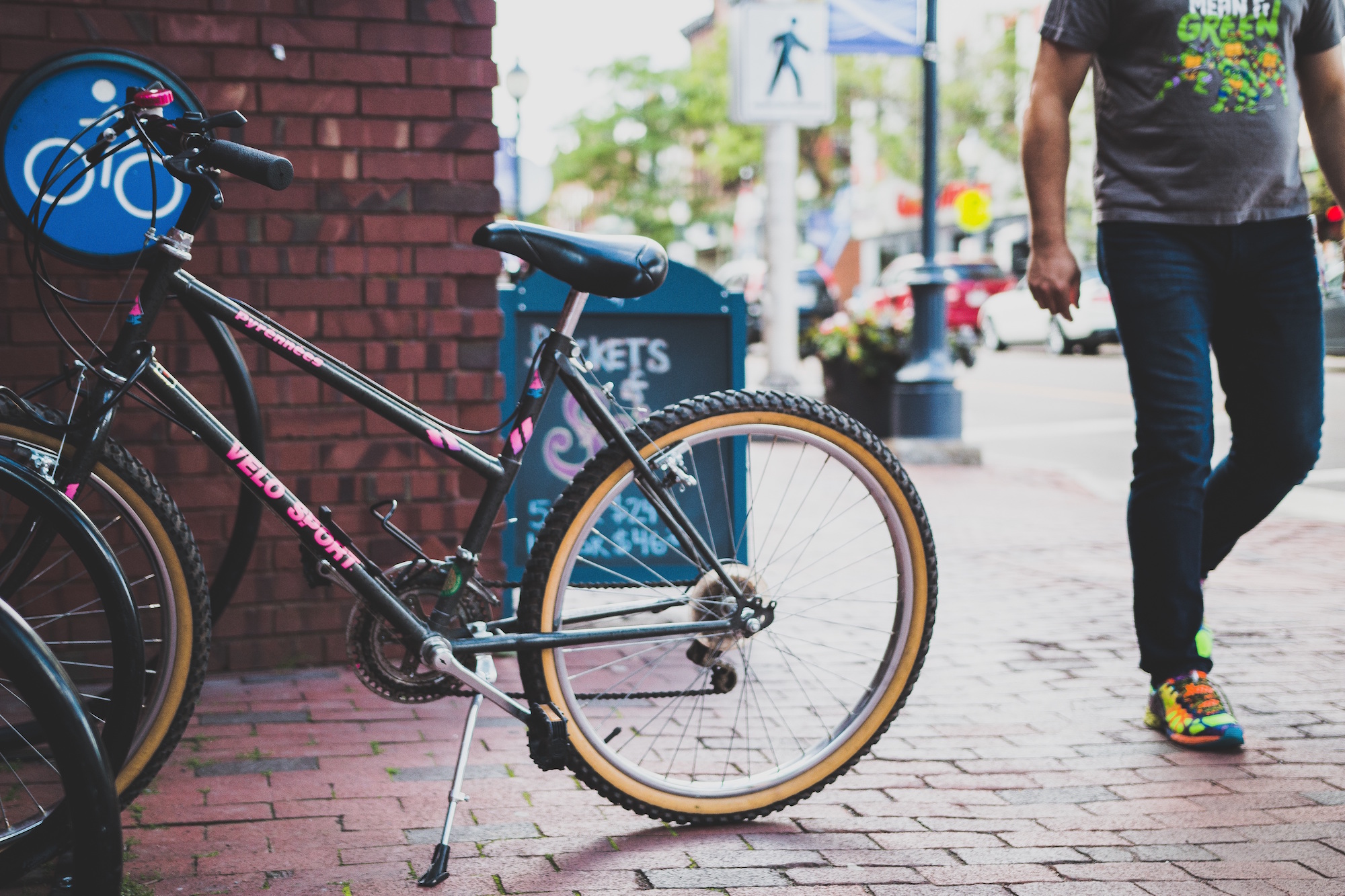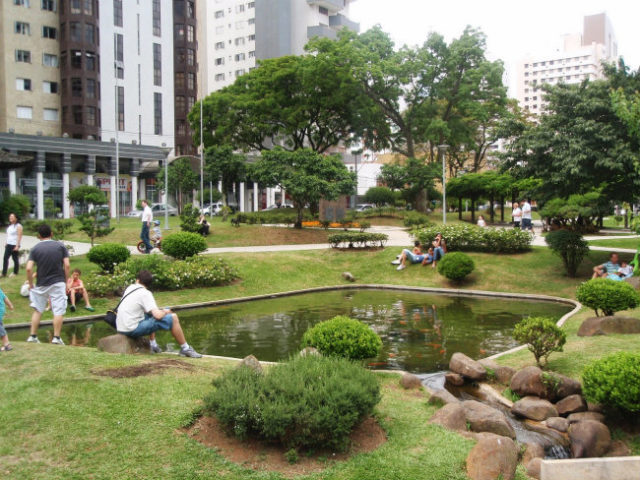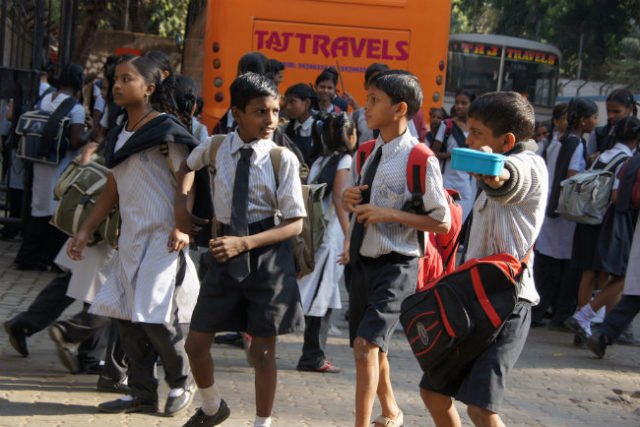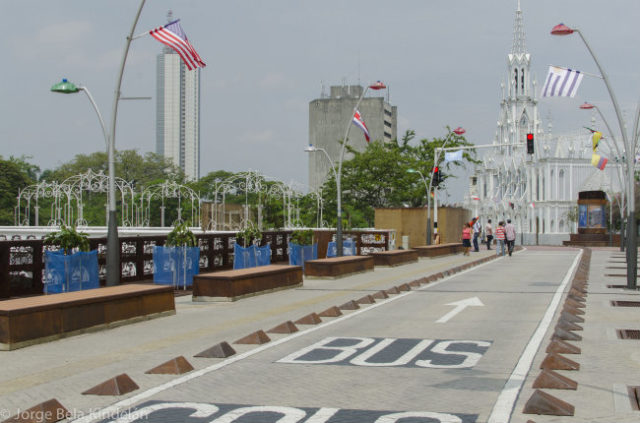
Can Biking and Walking Save Lives?
août 5, 2014 — Uncategorized
Building a walkable, bike-able, and “human-scale” city is a crucial but challenging process in creating just and inclusive cities. Sidewalks, bike lanes, pedestrian crossings, parks, and green areas are all pieces of a complex puzzle to help citizens navigate their city safely and sustainably. The following examples from Curitiba, Cali, Jakarta, Mumbai, Lagos, and Johannesburg showcase a number of initiatives working to design cities for human scale.

In Brazil, Curitiba’s expansion has been planned with strong land regulations, preventing urban sprawl. Curitiba has 64 square meters of green space per person, significantly more than most Latin American cities and even many cities in the rest of the world. The city also launched a project in 2007 to incentivize landowners to establish public parks on their private land, in exchange for exemption from certain state and federal land taxes. The results speak for themselves: In 1988, Curitiba had five parks and five forests; today, it has 21 parks and 15 forests, all protected by the Municipal Secretariat of Environment. Thanks to its heavy investment in public spaces as well, Curitiba has more than 450 public squares and more than 400 small public gardens where residents can walk, exercise, and interact. This, along with a good working public transportation system and the adaptation of pedestrian-only streets, means that almost the entire city is pedestrian-friendly. However, Curitiba is currently facing several challenges with respect to pedestrian safety, so it launched the Vida no Trânsito project (Life in Transit) to reduce accidents caused by irresponsible driving.
In Jakarta, a city with an 11 percent average growth rate in the number of motor vehicles each year, the idea of riding a bicycle is beginning to take shape. Bicycle activists like the Bicycle Committee of Indonesia have donated funds for the government to build more bike lanes. The booming Bike to Work Indonesia movement, started in 2004, is campaigning for citizens to switch modes of transportation and cycle to work. Today, many bicycling groups are emerging in Jakarta, hosting fun biking events and tours during the weekends and holidays. The government has also started to respond to the emergence of biking enthusiasts, building the first ever official bike lane in 2011 and unveiling the longest bike path in the city, a 6.7 km bike route in late 2012. However, there is a lack of enforcement for motorcyclists, who cut into lanes designated specifically for bicycles. Biking activists have therefore launched a “Seize the Bike Lanes” campaign, which puts together hundreds of bicyclists to fill up the lanes so that motorcyclists are reluctant to use them.

Mumbai’s streets are a scary battleground. Everyone is vulnerable in this situation, but no one more than the thousands of school children who walk to school, often in the streets, in the absence of school buses and navigable sidewalks. In response, the Walking Project is advocating for better sidewalks in the city. A new initiative, Safe Kids Foundation, works to prevent accidents to children in India, teaching safe behaviors to pedestrian children and to urban motorists through educational materials and hands-on activities. As part of the “Walk This Way” project that Safe Kids Foundation launched in Mumbai with support from FedEx, organizers and kids from local municipal schools painted an 80-foot-long school wall with creative messages illustrating proper road safety.
Lack of road safety awareness and poor road conditions are some critical factors responsible for thousands of avoidable fatalities in Nigeria. In Lagos, there has been an emphasis on keeping city pedestrians safe from harm’s way by improving road safety rules and infrastructure. Recently, the government has been building pedestrian bridges and express-ways all over the city to safeguard pedestrians against accidents and to further encourage safe city walking. More and more sidewalks can be seen across Lagos, especially near busy roadways. The sidewalks that were previously being used for other activities have been cleared out. The Arrive Alive Road Safety Initiative focuses on sensitizing city residents about the importance of road safety, ranging from safety engineering and road improvement, to motorcycle and pedestrian safety campaigns. Campaigns targeted towards pedestrians advocate for the appropriate use of safety features such as the zebra crossing, the correction and installation of road signs, and effective navigation of roadways.

Cali’s exponential growth and the absence of a mass transportation system led to a tremendous growth in the number of motorized vehicles, making this Colombian city a difficult and dangerous place for pedestrians and cyclists. The opening in May 2013 of the Bulevar del Río represented a turning point in the relationship between motor vehicles and pedestrians and cyclists. It is a pedestrian corridor along the river, about 800 m in length, located in the heart of the city’s traditional center. The Bulevar del Rio Project has become a large, safe, public space, in a city that sorely lacks them. It allows for the enjoyment of the Cali River, and facilitates pedestrian transportation in one of the most densely used areas in the city.
In South Africa, travel is dominated by walking and public transport. In Johannesburg, the situation is complicated by the marginalization created by historic spatial planning and the sprawling, low-density nature of the city. A strategy, known as “Non-Motorised Transport” or NMT, has gradually become a priority area at all levels of government, resulting in the City of Johannesburg’s Framework for NMT in 2009. NMT, focusing specifically on cycling, is envisioned to support and integrate with other transport nodes, including projects such as the Bus Rapid Transit System and Gautrain stations, allowing individuals in outlying areas to bicycle to the nearest public transport node. In practical terms, NMT strategies deal with pedestrian walkways and cycling routes, and their related streetscapes of lighting, paving, street furniture, landscaping, camera surveillance, and traffic calming measures. Following international precedents, Public Bicycle Systems will also be introduced, where the public can hire bicycles from one fixed-point station and return them at another. The benefits of NMT include increased road safety and security, reduced travelling time and distance, and safer environments for the majority of learners who walk to and from educational institutions.
Building a human scale city requires long-term effort, and the above examples showcase some successful approaches to make cities more human-centric. Visit URB.im to learn more and to join the discussion.
This post was originally published on the Huffington Post as part of a series by URB.im